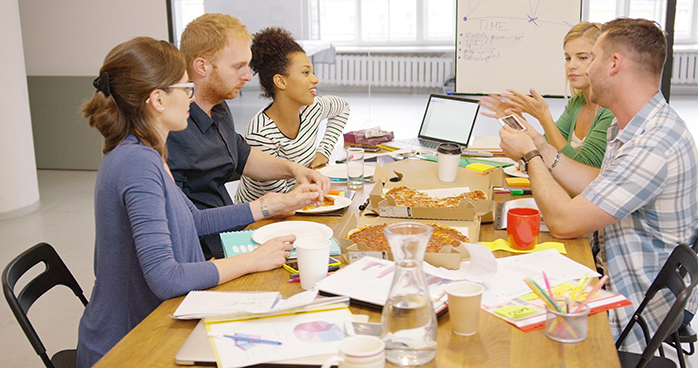
By Heather Nezich, courtesy SBAM Approved Partner ASE
No, you don’t have to serve pizza at every meeting. But a golden rule for meetings is that if you were to serve pizza to the meeting attendees, two medium pizzas should suffice. If that wouldn’t be enough, then you have too many people in the meeting.
Meetings with too many attendees become more informational, where most attendees are passive. So how do you decide who the attendees should be? According to the book Running Meetings by Harvard Business Review, individuals from these categories should be considered:
-
The key decision makers for the issues involved
-
The ones with information and knowledge about the topics under discussion
-
People who have a commitment to or a stake in the issues
-
Those who need to know about the information you have to report in order to do their jobs
-
Anyone who will be required to implement any decisions made
However, not all of these people may need to attend. A small, two pizza, meeting is best to actually decide or accomplish something (up to eight people); a medium sized meeting is well-suited for brainstorming (up to 18); and for pure information sharing large meetings can be appropriate.
Other tips for successful meetings include:
Determine if you really need a meeting. Will an email suffice? If the meeting is informational, consider first whether a simple email would be as effective.
Choose attendees who will make a unique contribution. Invite the minimum number of people to meet your goal and only people that will effectively contribute.
Create and share an agenda. Include the agenda in the meeting invite so that attendees know how to prepare and what to expect. Do not send a vague meeting request.
Make it tech-free. Set an expectation that attendees should not be working on their laptop or using their phone during the meeting. It’s distracting and it shows the person is not engaged.
Make it remote friendly. Due to the increasing amount of employees who work remotely, always include a remote option for the meeting attendees.
Encourage diverse thinking. Invite team members with different perspectives and encourage all attendees to speak up. Provide a safe environment where differing opinions are welcome.
Stay on course. Stick to the agenda and try not to get off on tangents. Use a “parking lot” for off-topic ideas or challenges that arise. You can revisit them at a later date.
Review for effectiveness. Specifically with recurring meetings, continually evaluate them for effectiveness. If they are not effective, make some changes or reevaluate if the meetings are necessary.
Always end with next steps. Before adjourning the meeting make sure to discuss what the next steps are and any action items.